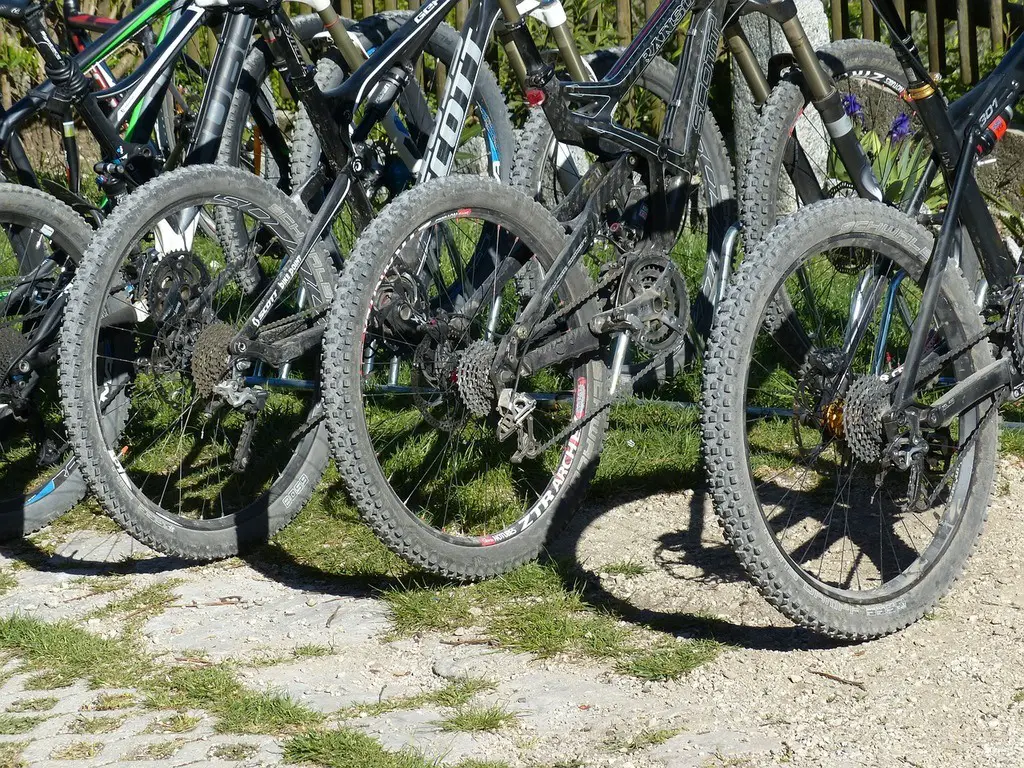Types of Mountain Bike Tire
If you have been to a bike shop, you will see that there are many choices of mountain bike tires to choose from, but basically, there are only two types of mountain bike tires; the tubular and the clincher mountain bike tire. Both have their own advantages and disadvantages.
Please note that as an Amazon Affiliate we may earn commission from qualified purchases — thanks for your support!
Types of Mountain Bike Tire

Clincher Mountain Bike Tires
I’ll talk about the clincher tire first since they are the most common. Most of the mountain bike rims these days are made for clincher type mountain bike tire, you will see why, after I discuss with you both clincher and tubular tire. When you cut the clincher tire in half you’ll see that it is U-shaped.
This is because it has to have a place to put the internal tube in and it has to be connected to the rim. The clincher tires are created from three important parts; the fabric, the bead, and the rubber. What gives the tire its shape is the fabric, the tire is round because of the fabric component, usually, nylon cords, when you look at the underside you will see that there are layers parallel to each other these layers or threads are the nylon cords, and they are very essential to the tire.
Quality and performance are base on these layers which are called TPI (Threads Per Inch) by the tire manufacturers; higher TPI signifies a tire that has a finer and has much more flexible type fabric. These mountain bike tires execute much better by giving a considerably less rolling level of resistance and lighter in weight, but they’re easier to get damage.
The regular bead is the hard steel wires that are attached to the tire’s edge and holds it firmly to the rim when air pressure is added. Some beads today are made of updated components like Kevlar or state of the art alloys which are very lightweight (lightweight tires are easier to maneuver).
The rubber which is the most visible of all three parts covers and protects the fabric from any damage. The rubber also contributes to the overall performance of the tire. It can be either soft or hard. Soft rubber can give your mountain bike a better grip on the ground, but it wears out fast. Tires that have harder rubber covering rarely get flat and do not wears out easily.
However, it doesn’t grip much, you will end up sliding and falling more with this kind of component in your mountain bike tires.
Tubular Mountain Bike Tires
These tires are stitched all-around the interior section of the tube. Tubular MTB tires do not have beads like the clincher, so you can’t just use it with your usual rims. There are rims specially built for this type of tire and you have to glue the tubular tires to these specialized rims.
According to some mountain bike riders, tubular have some advantages over clincher mountain bike tires. Based on their experience tubular tires are lighter in weight, better grip and it rarely gets flat. Though if it does get flat, it’s way harder to fix than regular clincher type tire.
So if you are in a race and got a flat tubular Mountain bike tire, you are out of the race instantly unless you have a support team with a spare wheelset, which follows you the whole time you’re in the race. Because its biggest drawback is fixing it when it gets punctured.
This is how you fix it – after applying the patch, you still have to glue it to the rim and wait for the glue to dry for a few hours, by that time you are the only racer left in the race track.
So whichever tire you want, what you need to consider is the type of rims you have and the terrain where you want to ride. I’ll try to elaborate more on choosing mountain bike tires in my next post. Watch out for it.
